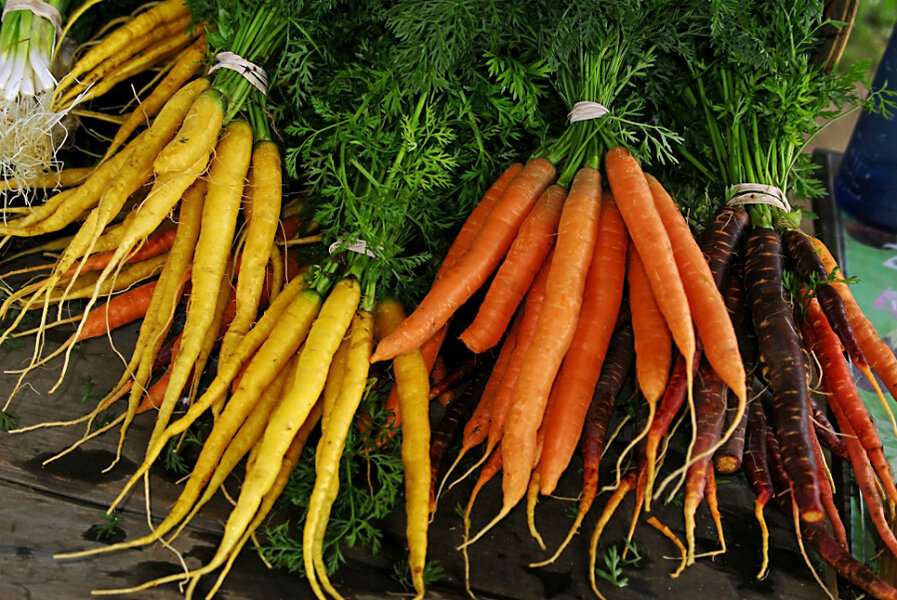How mobile technologies are helping small, rural farmers grow their businesses
Loading...
Salt. The soil needed salt. And not just a sprinkling, but up to two kilograms, applied in a shallow trench encircling each aging coconut tree where the outer leaves cast their shadow when the sun was overhead.
Marcelina Lastimosa learned the technique from an agriculturalist, Joraphel Tingcayao, who shared advice as she collected data on her tablet. Within 30 minutes, Ms. Tingcayao had a complete picture of the farm itself and the farmer’s practices, finances, environmental conditions, and key vulnerabilities. That data will feed in to the FarmerLink program in the Philippines, an ambitious, digitally connected program to help rural coconut farmers overcome the obstacles that keep them poor despite their greatest efforts.
Like the Philippines’ 3.5 million coconut farmers, smallholder farmers across Asia and Sub-Saharan Africa produce as much as 80 percent of the food supply, but their significance to food security was largely unnoticed until soaring food prices in 2008 put agriculture at the fore of the global development agenda. That crisis necessitated rethinking food security in the larger context of climate change, sustainability, and equitable growth. In doing so, it highlighted the irony that smallholder farmers, despite comprising 90 percent of 570 million farms worldwide, are poor and hungry themselves.
In as much as it revealed the magnitude of the problem, it also presented opportunities for innovations in agriculture. The last seven years have seen a proliferation of technology solutions geared towards addressing smallholder farmer challenges at different points in the agricultural system, from production to financial services and market access. Mobile-enabled agriculture technologies, in particular, show promise due to high mobile phone adoption in developing countries.
In the Philippines, where mobile penetration is 50 percent and agriculture is the second biggest employer in the country at 27 percent, poverty incidence among farmers has averaged at 38 percent within the last decade. It is even higher for smallholder coconut farmers. Some 60 percent live in poverty even though coconut products comprise nearly 40 percent of top Philippine exports in terms of value, and global demand continues to rise.
While mobile agriculture is slowly catching on in the Philippines—the Department of Agriculture, for example, released two mobile applications last year aimed at disseminating agricultural information to farmers — its potential as a tool against poverty is just being tested.
To overcome the entrenched poverty of Filipino coconut farmers, several challenges must be addressed. First is low productivity: farm-holdings are passed down from generation to generation and agricultural practices are inherited; the propensity to adopt more optimal techniques is low even though they may receive training. Second is the lack of access to financial services and to larger markets, especially for farmers in mountainous and hinterland regions.
Third is the often devastating effects of extreme weather and climate-related pest and disease outbreaks. In 2013, Typhoon Haiyan wiped out 33 million coconut trees in the Philippines, destroying the livelihoods of one million families; three years later, one of the strongest El Ninos struck, causing droughts that dramatically reduced yields and spread hunger among farmers. And, in 2014, the Coconut Scale Insect, commonly known as “Cocolisap,” infested more than a million coconut trees around Central Luzon.
In October 2016, Grameen Foundation was testing the Early Warning System component of Farmerlink when the same pest attacked Basilan province, a major producer of coconut in the Philippines. According to Agriculture Secretary Emmanuel Piñol, “with six million coconut trees in the province, about three million have been infested with cocolisap.”
With such challenges in mind, Grameen Foundation initiated FarmerLink in the Davao region. It combines satellite data and farm data collected by mobile-equipped field agents to predict and detect threats from climate-sensitive pests and disease. As threats are identified, farmers receive warnings over their mobile phones. Early warning also enables government agents to focus on outbreak areas, sending response teams to help control outbreaks before they cause devastating losses. The program links as well to an Early Warning system for extreme weather, bringing both predictive and real-time weather information to formerly isolated farmers.
FarmerLink aims to build farmer resilience by linking farmers to a full range of services and information, including tailored farming and financial advice made possible by the baseline data collected by field agents like Ms. Tingcayao.
FarmerLink partners reflect this comprehensive approach: they include Coconut Authority (a government agency); Franklin Baker, the country’s largest coconut exporter; Nutiva, a U.S.-based producer of organic foods; People’s Bank of Caraga, and technology and data companies, including a satellite company. It is the first program in the Philippines to integrate the resources and expertise of key players in the coconut value chain, specifically to benefit smallholder coconut farmers.
A year in to this pilot project, nearly 7,500 coconut farmers are receiving regular SMS with practical advice to improve their farming and cash management. Field agents have also compiled complete profiles on 1,600 coconut farmers who will now receive intensive one-on-one farm advisorship.
Feedback from the field has been encouraging: one farmer shares that while she always knew about the benefits of mulching, she only began to practice it after receiving specific instructions via SMS. Another farmer decries the El Nino drought that has cut her coconut harvest by two-thirds, but notes how she is now planting healthy young trees, diversifying her farm, and learning to intercrop with coffee. Another farmer shares that he valued the SMS he received so much that he refused to delete them from his mobile phone.
In the FarmerLink program, mobile agriculture aims to reconfigure the agricultural system in ways that support the success of poor smallholder farmers who form the backbone of a multi-billion dollar industry. FarmerLink, and the advent of mobile agriculture in the Philippines presents exciting opportunities for impact as long as it is centered on, and relevant to, smallholder farmers and the many organizations that likewise have a stake in the future of a healthy coconut industry.
This story originally appeared on Food Tank.







